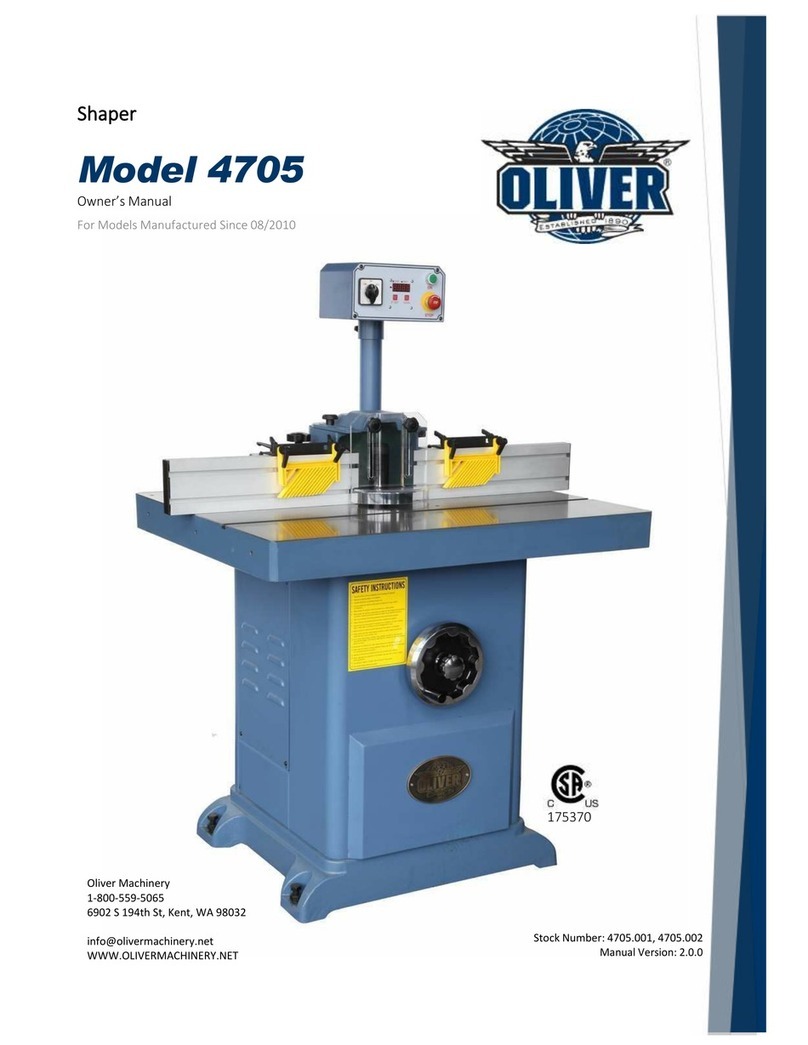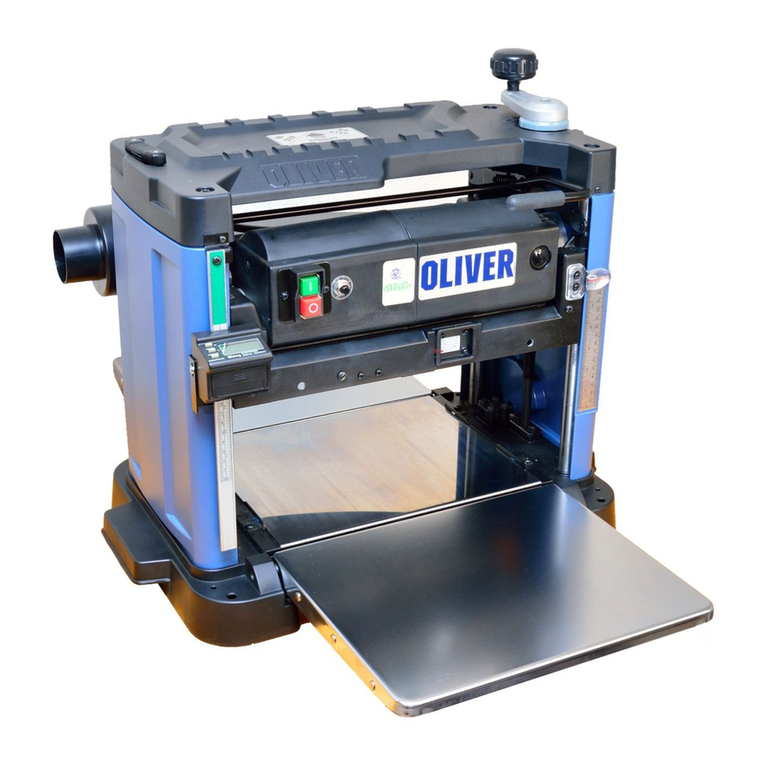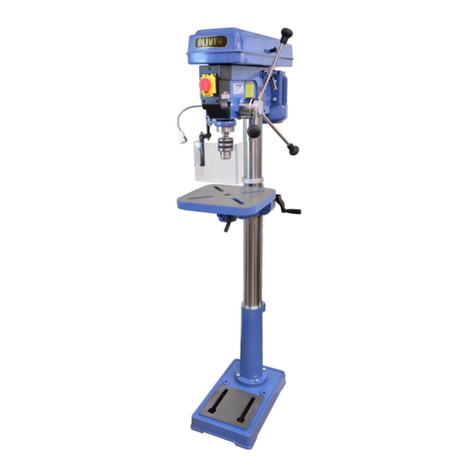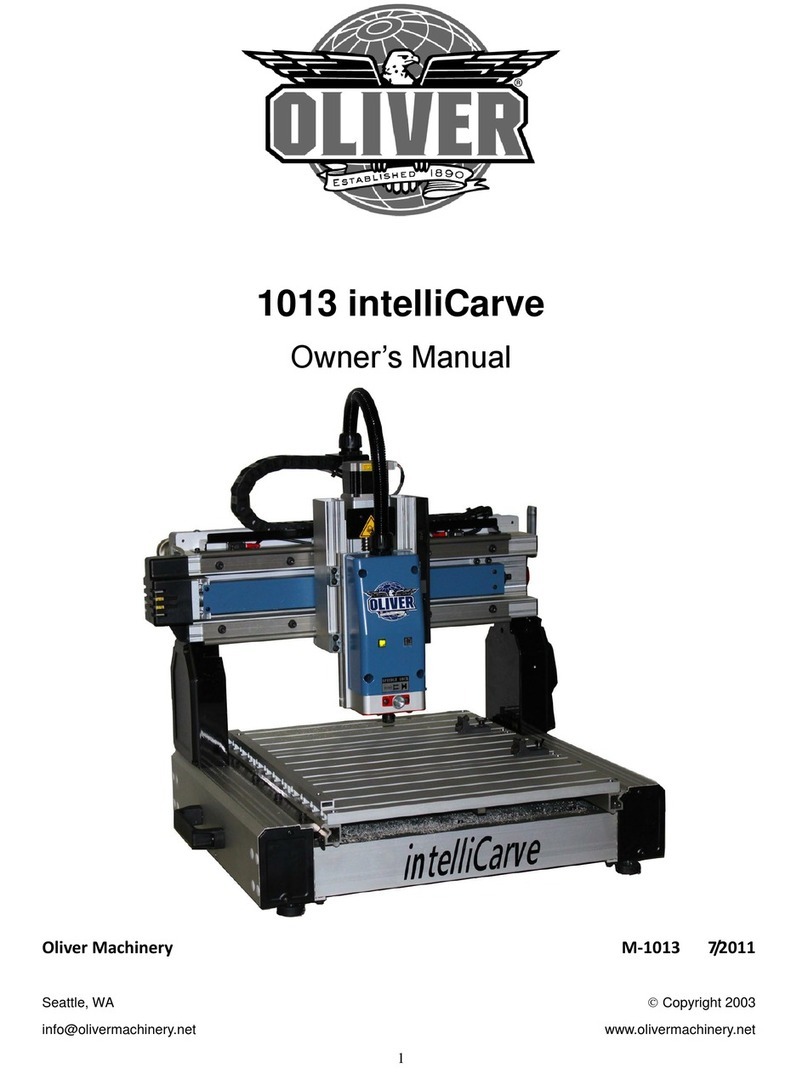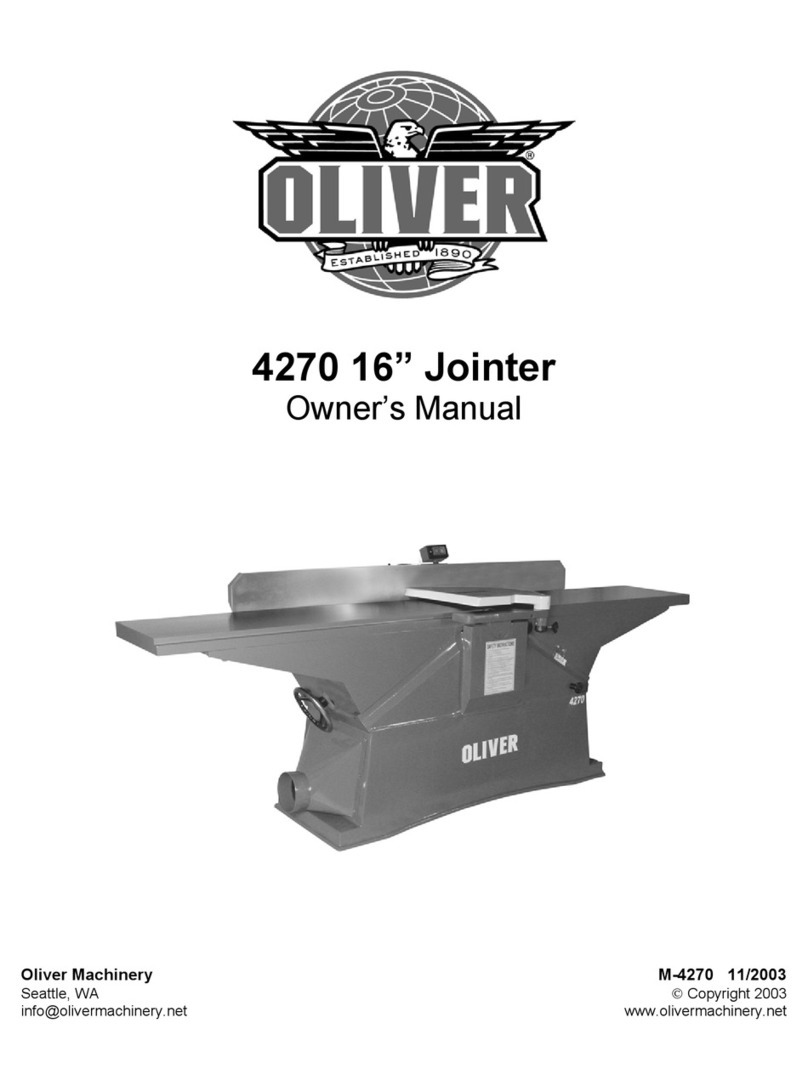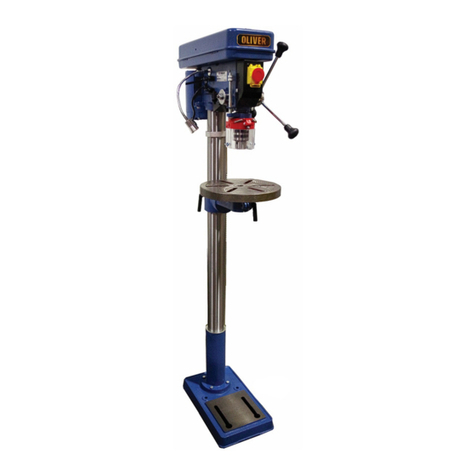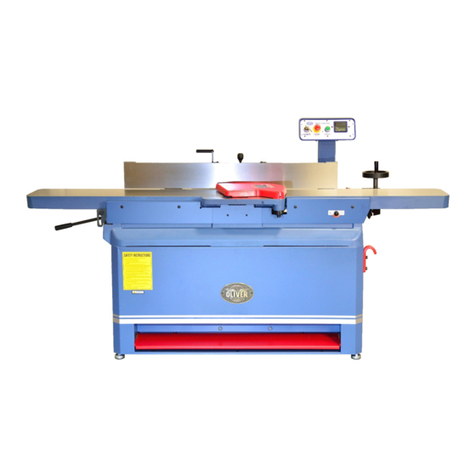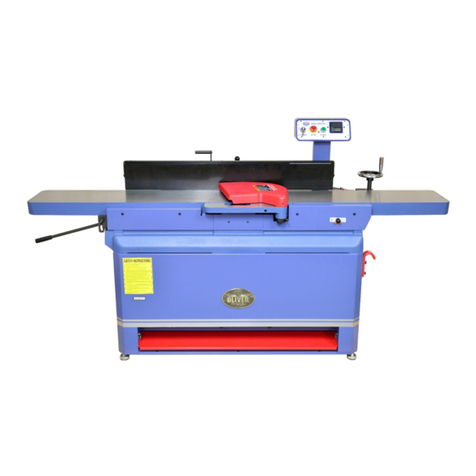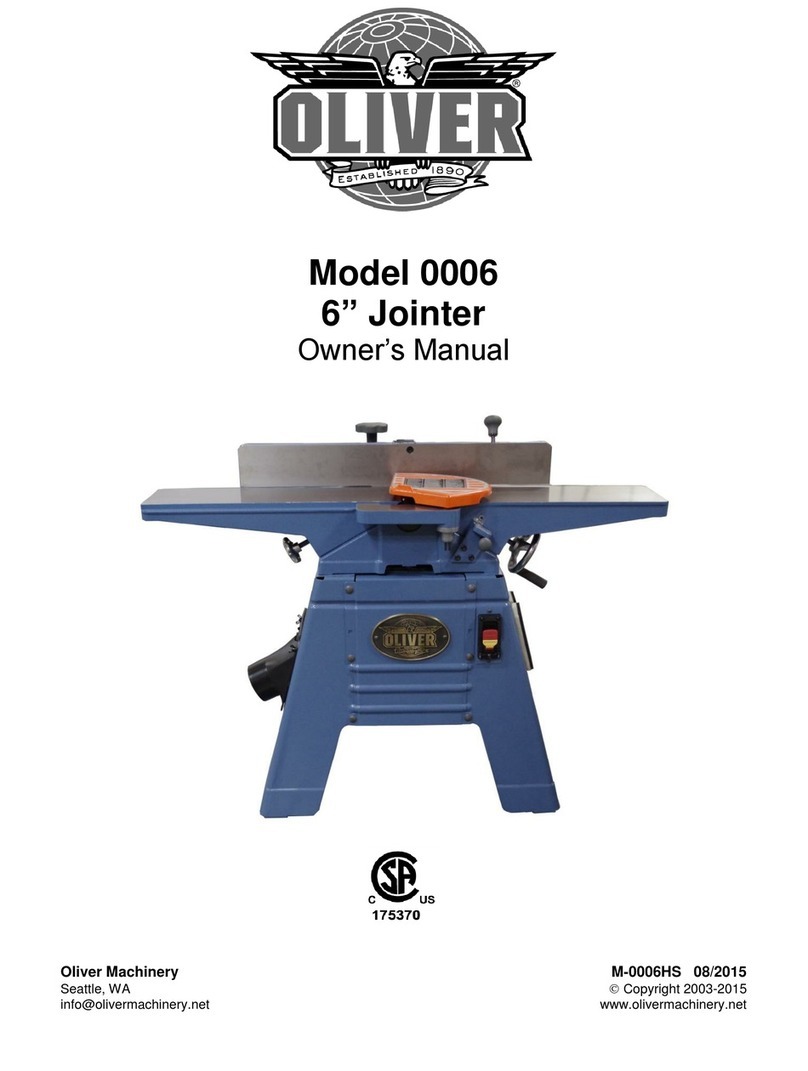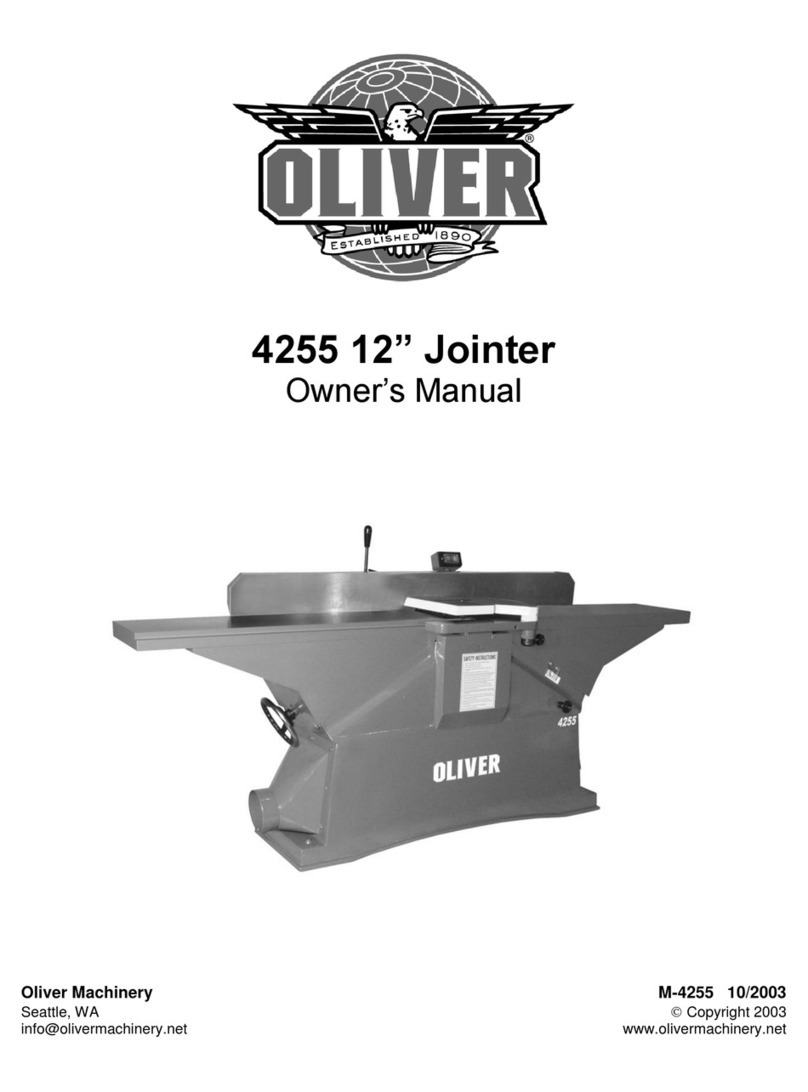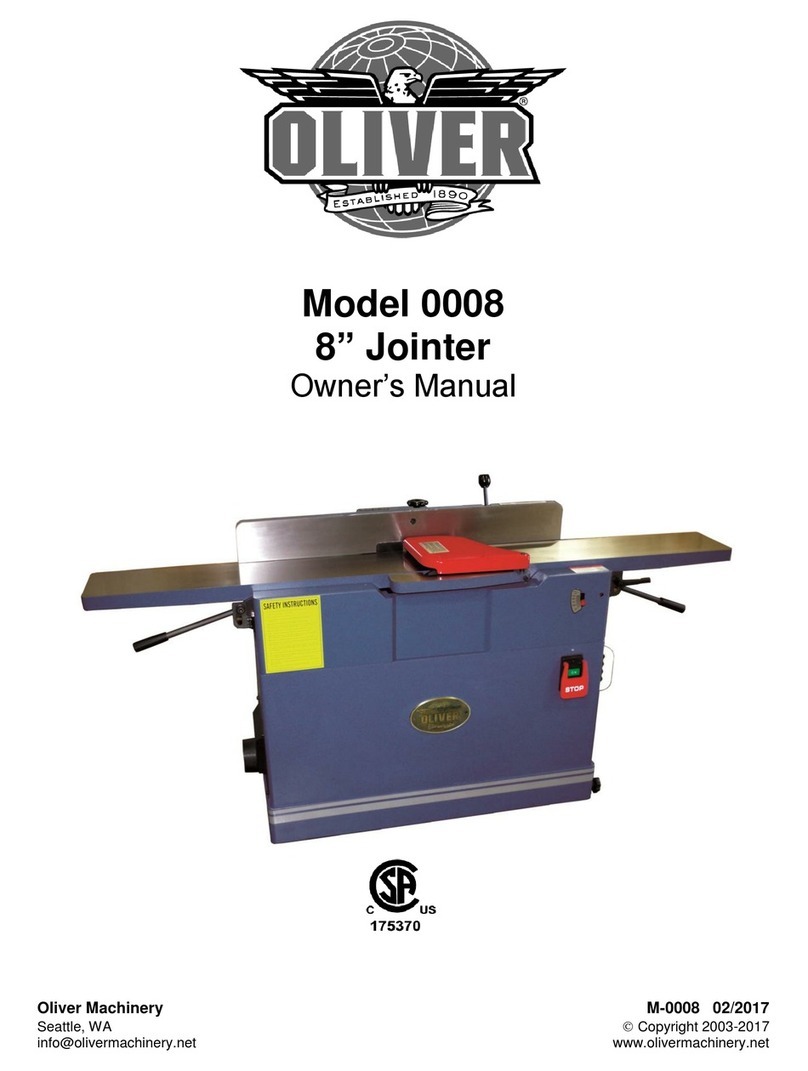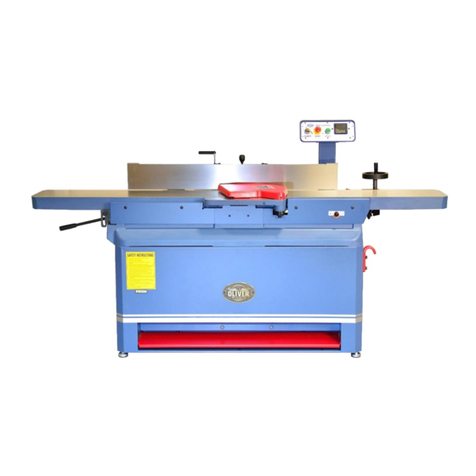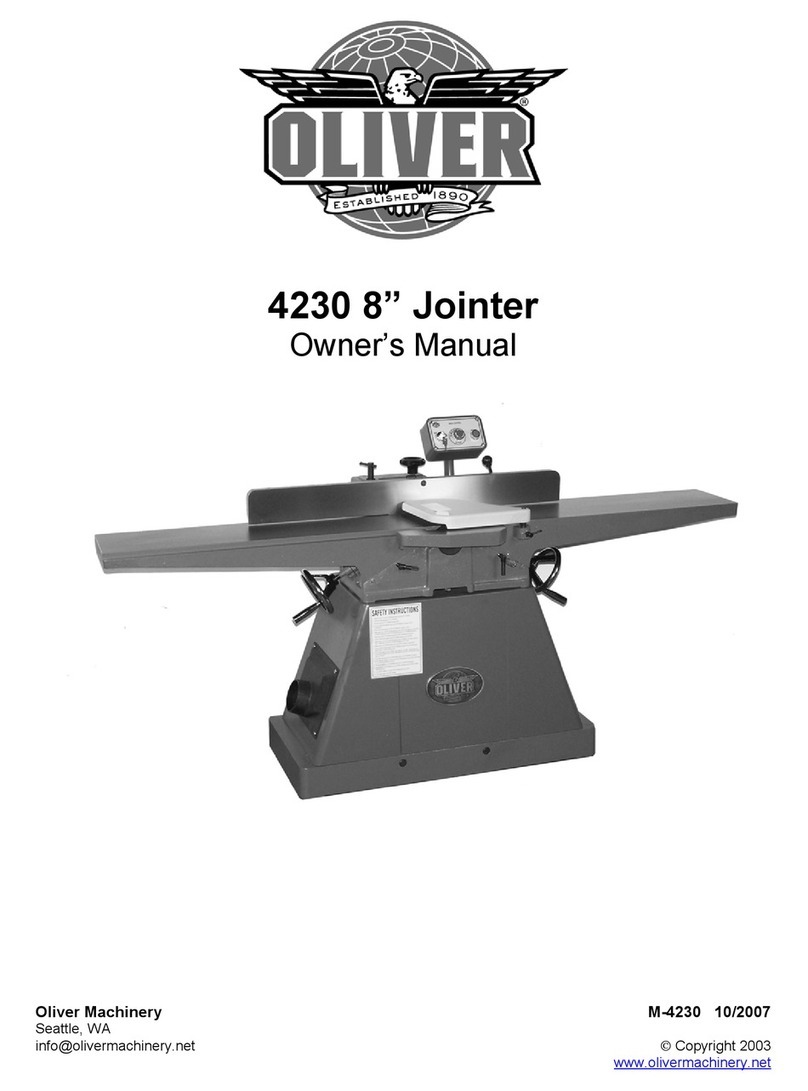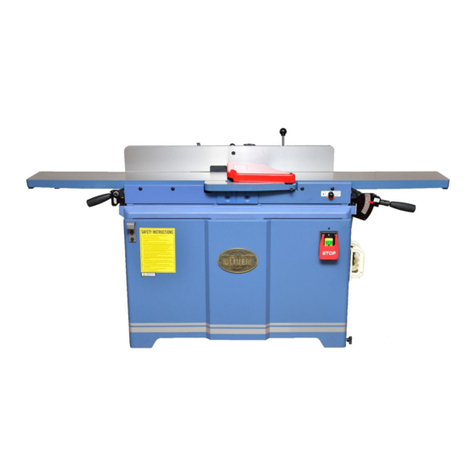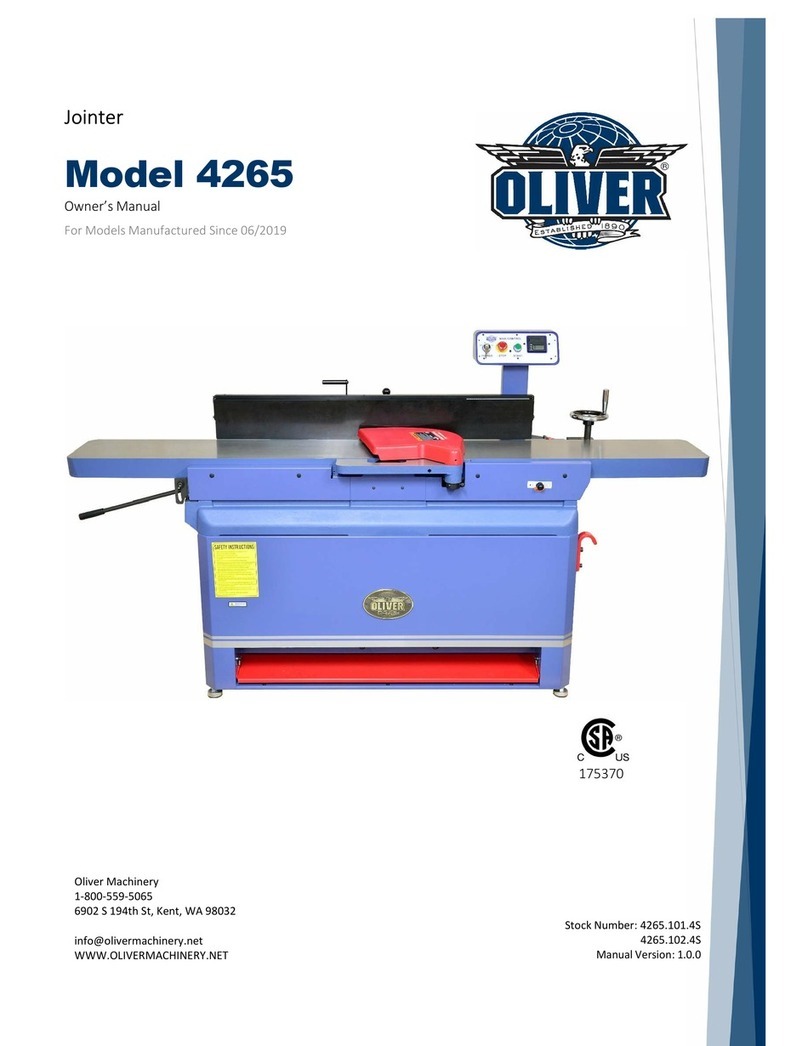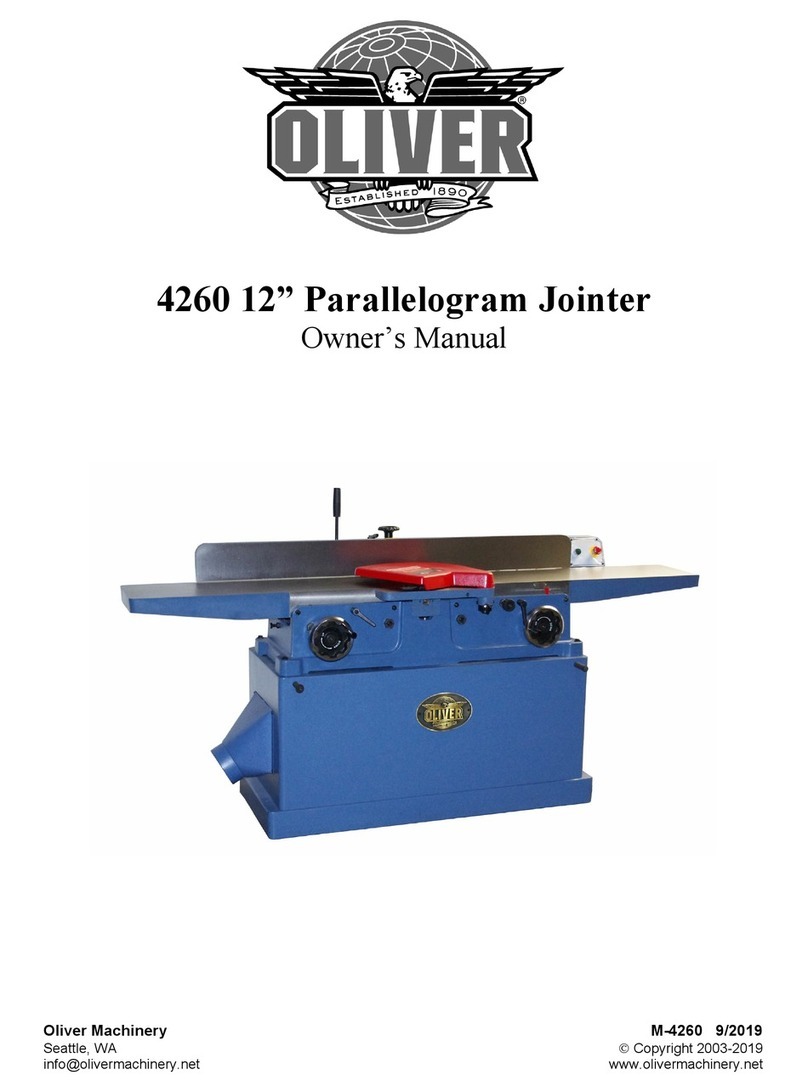
WARNING
Read this manual completely and observe all warning labels on the machine Oliver Machinery has made
every attempt to provide a safe, reliable, easy-to-use piece of machinery Safety, however, is ultimately
the responsibility of the individual machine operator As with any piece of machinery, the operator must
exercise caution, patience, and common sense to safely run the machine Before operating this product,
become familiar with the safety rules in the following sections
•Always keep guards in place and in proper operating condition
1. If you are not properly trained in the use of a shaper do not use until the proper training has been
obtained
2. Read, understand and follow the safety instructions found in this manual Know the limitations and
hazards associated with this machine
3. Electrical grounding: Make certain that the machine frame is electrically grounded and that a
ground lead is included in the incoming electrical service In cases where a cord and plug are used,
make certain that the grounding plug connects to a suitable ground Follow the grounding procedure
indicated in the National Electrical Code
4. Eye safety: Wear an approved safety shield, goggles, or glasses to protect eyes Common
eyeglasses are only impact-resistant, they are not safety glasses
5. Personal protection: Before operating the machine, remove tie, rings, watch and other jewelry and
roll up sleeves above the elbows Remove all loose outer clothing and confine long hair Protective
type footwear should be used Where the noise exceeds the level of exposure allowed in Section
1910 95 of the OSHA Regulations, use hearing protective devices Do not wear gloves
6. Guards: Keep the machine guards in place for every operation for which they can be used If any
guards are removed for maintenance, DO NOT OPERATE the machine until the guards are
reinstalled
7. Work area: Keep the floor around the machine clean and free of scrap material, saw dust, oil and
other liquids to minimize the danger of tripping or slipping Be sure the table is free of all scrap,
foreign material and tools before starting to cut Make certain the work area is well lighted and that a
proper exhaust system is used to minimize dust Use anti-skid floor strips on the floor area where the
operator normally stands and mark off machine work area Provide adequate work space around the
machine
8. Operator position: Maintain a balanced stance and keep your body under control at all times
9. Before starting: Before turning on machine, remove all extra equipment such as keys, wrenches,
scraps, and cleaning rags away from the machine
10. Careless acts: Give the work you are doing your undivided attention Looking around, carrying on a
conversation, and “horseplay” are careless acts that can result in serious injury
11. Disconnect all power sources: Before performing any service, maintenance, adjustments or when
changing cutters A machine under repair should be RED TAGGED to show it should not be used
until the maintenance is complete
12. Short stock: Never shape stock less than 12 inches in length without special fixtures When
practical, shape longer stock and cut to size
13. 12 inch rule: When shaping, never allow your hands to come closer than 12 inches to the cutters
14. Collars: When shaping with collars, the collar must have sufficient bearing surface The work must
also be fairly heavy in proportion to the cut being made Do not use short, lightweight stock when
shaping against collars
3
